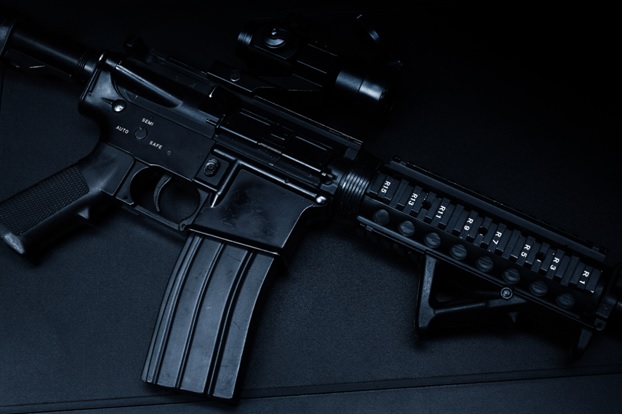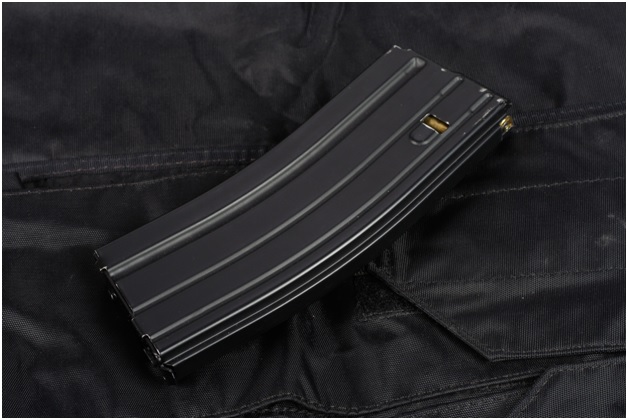Let’s face a simple fact. The vast majority of AR-15 rifles are chambered in 5.56 NATO which can shoot both 5.56 and .223 Remington cartridges.
And, beyond this, many of the platforms that tinkerers and gunsmiths make for their own personal use are probably of the same caliber, although that much can only be surmised.
This makes sense. Both 5.56 and .223 are effective small-bore centerfire cartridges that offer good terminal ballistics out to 100 yards and decent performance within 300. They shoot fairly flat and have good stopping power at close and intermediate ranges, at least on targets up to medium-game size.
Plus, both 5.56 and .223 are relatively affordable and typically in fairly abundant supply. It’s easy to find ammo, present ammo crisis notwithstanding.
With that said, there is a huge range of alternatives to the ubiquitous .223. There are parts for AR builds ranging in size from .22LR to .50 Beowulf, with lots in between.
One of the most popular cartridges, especially in recent years, has been the .300 Blackout. This post will cover some of the reasons this is an attractive alternative to 5.56/.223, what it offers in terms of performance, and why it might be worth your while to build an AR with a .300 Blackout upper.
A Quick Intro to the .300 Blackout Cartridge
The .300 AAC Blackout cartridge, also sometimes known as 7.62x35mm (they are the same) is a cartridge developed by Advanced Armament Corporation in conjunction with Remington Arms, originally for the M4 carbine.
Originally designed in 2009, it is based on both the 5.56 NATO cartridge, although other cartridges influenced the design, such as the Soviet 7.62x39mm cartridge and .30 caliber Wildcat cartridges.
The desire was to produce an intermediate cartridge that could be fired with an M4 bolt and which fired a .30 caliber bullet; the .300 Blackout effectively took the form of a modified trimmed 5.56 (.223) cartridge with a wider neck.
And so - condensed as this history is - the .300 AAC Blackout was born.
But that doesn’t answer why you should build an AR with a .300 Blackout upper. Let’s take a closer look at that.
Why a .300 Blackout Upper Makes a Great Choice for an AR Build

There are several reasons that a .300 Blackout upper makes a wise choice for someone looking to build their own AR. Here are some of the top reasons.
.300 Blackout vs. 5.56 NATO: Ballistic Comparison
First, let’s take a look at the ballistics between the 5.56 NATO and the .300 AAC Blackout.
First off, with respect to the bullet size, the .300 AAC Blackout has a much larger frontal area which increases the wound produced by the projectile alone. It is 89% larger in frontal area than the 5.56.
Because it is a larger round housing a larger, heavier bullet, .300 AAC Blackout produces much more muzzle energy than your standard 55-grain 5.56 bullet, under identical conditions.
Your average 55-grain 5.56 round will produce a muzzle velocity of around 2,500 FPS and energy of 820 ft-lbs at the muzzle, compared to a 110-grain .300 AAC Blackout’s velocity of about 2,100 FPS and almost 1,100 ft-lbs of muzzle energy. Though slower, it is about 35% more powerful at the muzzle.
At close ranges, it maintains this ballistic edge, too. At 100 yards, the same 5.56 round will maintain a little over 600 ft-lbs of energy, whereas the .300 Blackout will still carry more than 800.
This makes the .300 AAC Blackout a much harder hitting round which much greater stopping power at close and intermediate ranges, compared to the 5.56.
You Get the Same Performance from a Shorter Barrel
If your aim with customizing an AR platform is defensive, then you can use a shorter barrel and get better performance from the .300 AAC Blackout.
Cartridges like 5.56 perform better with longer barrels, but you can get much superior ballistic performance from the .300 AAC Blackout from a shorter barrel. Remember, it was developed for the M4.
So, if you’re building a platform for home defense, you can make a much more nimble rifle that’s better in close quarters.
Reloaders: It Uses Less Powder
You might expect that a larger cartridge would require a larger powder charge. While this is often the case, it isn’t here, and reloaders will appreciate the fact that a .300 AAC Blackout cartridge can be loaded with less propellant than a 5.56 would require. This being the case, this is quite an economical cartridge for reloaders.
If you have the right equipment, you can also trim and resize 5.56 casing and reload them to .300 AAC Blackout specs, since the latter is based on the former. This can also offset the higher costs associated with this cartridge.
Versatility and Capability
In addition to its defensive applications, .300 AAC Blackout can be a highly effective hunting cartridge, even on medium and large game, at close ranges. Within 100 yards, it is a hard-hitting cartridge that is more than enough to dispatch any varmint (think yotes and foxes) and powerful enough to take hogs, deer, and other medium and large game (in compliance with local regulations, of course).
You Can Keep Your Magazines

While you can get .300 AAC Blackout magazines, you can use your 5.56 mags with .300 Blackout cartridges, though some will feed more reliably than others.
Wider Range of Projectile Choices
There is a whole great deal of options you will have in bullets, ranging from 120 to 220 grains; on the lower end they are supersonic and on the higher end they are subsonic.
One other thing to note here is that you will be able to shoot subsonic rounds, and your system will be able to cycle them without modification. They also suppress well.
Potential Drawbacks of .300 Blackout
With all of this said, there are some limitations to the .300 AAC Blackout. Here are some potential drawbacks.
- Long-range ballistics: Let’s face it. The slower velocities and heavier projectile associated with the .300 AAC Blackout result in pretty extreme bullet drop. Especially with subsonic bullets. As an example, we’ll look at Hornady’s 190-grain Sub-X Subsonic rounds; they drop 4” at 100 yards, but 2.5’ at 200 and 8’ at 300 - that’s quite substantial.
- Expense and availability: On average, .300 AAC Blackout rounds, though relatively easy to find, are nearly twice the cost of 5.56. But, at the same time, if you’re a reloader, you can repurpose 5.56 rounds to shoot larger .300 projectiles and make that back in lower propellant charges (dependent on load data), so this might be a moot point in the long run.
- Penetration: Last but not least, given the round’s up-close power, if you keep it for defensive purposes, overpenetration might be a concern.
But this doesn’t mean the .300 AAC Blackout is anything short of an exceptional cartridge, especially if you intend to short a rifle with a shorter barrel and most of your uses for it will be at closer ranges.
Looking for a .300 Blackout Upper?
Ready to get started on your build? We carry a wide variety of options in .300 Blackout upper receivers, as well as other parts for .300 AAC Blackout platforms, including complete build kits with bolt carrier groups.
Check them out via the previous link and if you need any help, contact us at Sales@MCSGearup.com.

